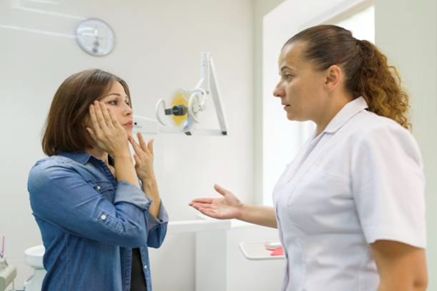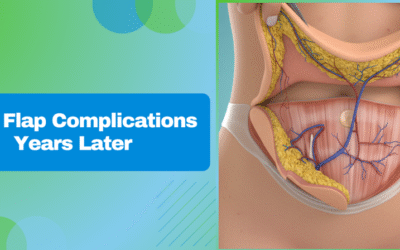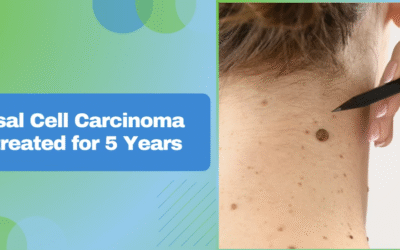
Facial Palsy Reconstruction in Mumbai
The human face is powered by intricate nerve networks that allow us to smile, frown, blink, and express emotions. When these delicate facial nerves are damaged, it can lead to facial palsy. Studies show that around 1 in 5,000 people worldwide develop facial palsy each year, and in India alone, more than 1,00,000 new cases are reported annually.
Facial palsy can result from multiple causes, including trauma, infections, tumors, congenital defects, or complications following surgery. Symptoms often include drooping of one side of the face, inability to close the eye, loss of smile symmetry, and impaired speech clarity. These effects can deeply affect a person’s self-esteem and social interactions.

Dr. Leena Jain, an accomplished Plastic surgeon in Mumbai, says:
“Facial palsy is more than a physical disability; it impacts emotional wellbeing and interpersonal relationships. The right reconstructive approach not only restores movement but also rebuilds confidence and quality of life. Every treatment plan I create is shaped around what matters most to each patient.”
The first consultation is crucial for understanding the severity of facial palsy and planning a personalized treatment path.
What to Expect at the Consultation
During this stage, the specialist will carefully examine muscle activity, nerve function, and overall facial symmetry. Patients can expect:
Detailed Assessment:
Discussion of Symptoms:

Customized Plan:
Addressing Concerns:
Treatment Options for Facial Palsy
Nerve Repair and Grafting: In early cases, direct repair or nerve grafting can restore nerve continuity. This is commonly referred to as Facial Nerve Repair.
Nerve Transfers: Healthy nerves from other parts of the face are redirected to reanimate the face.
Muscle Transfers: Functional muscles, often from the thigh, are transplanted to replace paralyzed facial muscles.
Static Procedures: For patients unsuitable for major surgery, static slings help improve facial symmetry and support.
Adjunct Therapies: Physiotherapy, speech therapy, and eye protection strategies to enhance functional outcomes.
Dr. Leena Jain, a renowned reconstructive microsurgeon in Mumbai, shares:
“No two faces recover the same way. In some patients, we can achieve dramatic recovery through early nerve repair, while others may benefit from staged procedures involving muscle or nerve transfers. What we’re working toward is everyday movement—a natural blink and an easy, balanced smile.”
With her extensive experience and patient-centered approach, Dr. Jain is often the trusted choice for individuals seeking Facial Nerve Repair in Mumbai.
Recovery After Facial Palsy Reconstruction
Key aspects of recovery include:
Hospital Stay: Usually short, with early mobilization encouraged.
Physiotherapy: Essential for retraining muscles and improving coordination.
Regular Follow-ups: To monitor healing and address any issues promptly.
Speech and Swallowing Therapy: For patients experiencing difficulty with articulation or eating.
Lifestyle Modifications: Avoiding stress, adopting eye care routines, and protecting the face during healing.
Dr. Leena Jain, a meticulous microvascular surgeon in Mumbai, notes:
“Recovery timelines differ from patient to patient. While some regain visible improvements within months, others may take longer. Rehabilitation plays as vital a role as surgery—it ensures that every small gain translates into meaningful function.”
Cost of Facial Palsy Reconstruction in Mumbai
Type of Surgery: Nerve grafting, nerve transfers, or muscle transfers each have different requirements.
Duration of Facial Palsy: Long-standing palsy often requires more intricate procedures.
Hospital & Surgical Facilities: Advanced microsurgical setups may add to expenses.
Rehabilitation Needs: Post-operative physiotherapy and therapy sessions are important cost considerations.
Patients can expect costs to vary widely, making it essential to get a personalized estimate during consultation.
Dr. Leena Jain, a distinguished facial reanimation specialist in Mumbai, emphasizes:
“Cost should never be the only deciding factor when it comes to facial palsy reconstruction. The right surgical expertise and rehabilitation support are investments in restoring identity, dignity, and quality of life.”
Benefits of Facial Palsy Reconstruction
Restoration of Smile: Regaining the ability to smile naturally and express emotions.
Improved Speech & Eating: Enhanced clarity of speech and better chewing/swallowing function.
Eye Protection: Ability to blink and close the eye, preventing corneal damage.

Psychological Wellbeing: Reduced anxiety, depression, and social withdrawal.
Symmetry & Appearance: Significant improvement in facial balance and self-confidence.
Dr. Leena Jain, a compassionate aesthetic reconstructive surgeon in Mumbai, explains:
“Facial palsy reconstruction restores much more than appearance. Many patients describe it as reclaiming their identity—being able to smile in photos, engage in conversations, and connect emotionally with others. These changes ripple into every aspect of their lives.”
Frequently Asked Questions
1. How soon should I start treatment after facial palsy?
2. Can facial palsy be treated without surgery?
3. Is facial palsy permanent?
4. Who is the best candidate for surgery?
5. Will my natural smile be restored?
Recent Blogs
Stages of Breast Reconstruction After Mastectomy – A Guide by Dr. Leena Jain
Breast reconstruction after mastectomy is a significant aspect of the recovery process, both...
DIEP flap complications years later
Life often throws unexpected challenges, and for many women, a breast cancer diagnosis is one of...
Basal Cell Carcinoma Untreated for 5 Years
Hearing the word cancer can instantly stir fear and uncertainty. It’s natural—cancer has long been...



